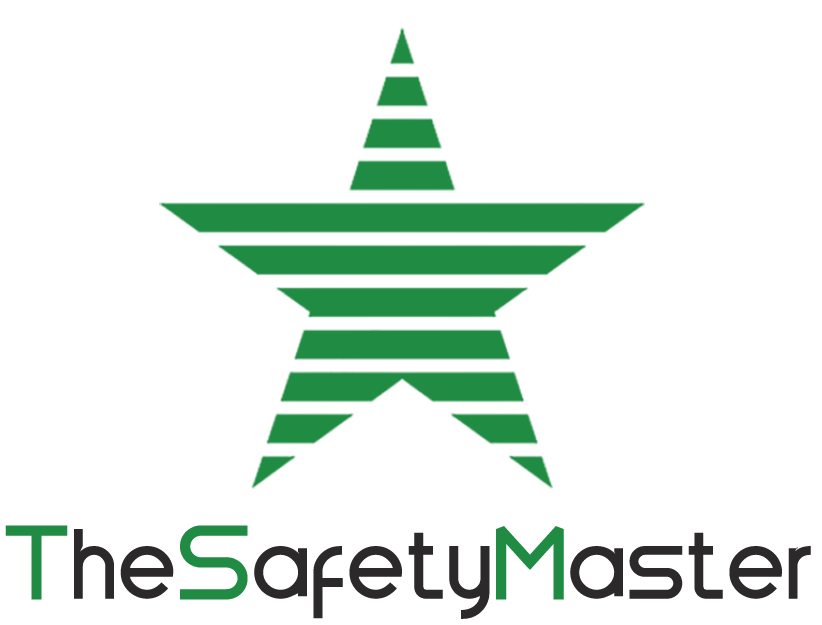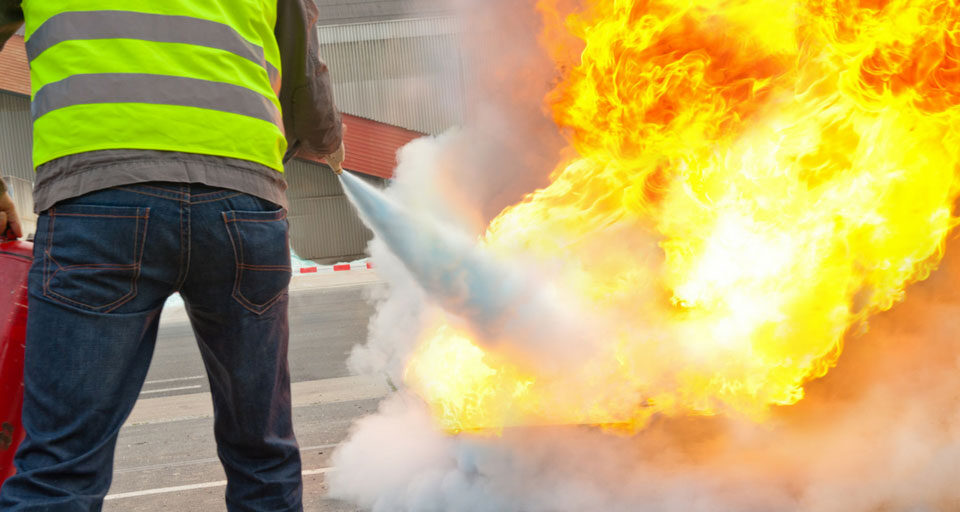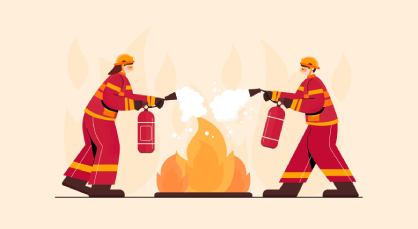Fire Load Calculation Study: A Critical Step for Smarter Fire Safety Compliance in Modern Industries

Building Fire & Life Safety – A Strategic Approach
October 10, 2025
The Importance of Safety Record-Keeping
October 11, 2025In today’s fast-paced industrial landscape, fire safety isn’t just a regulatory obligation — it’s a moral and operational necessity. Modern industries face complex fire hazards arising from the use of flammable materials, energy sources, and advanced machinery. Among the most vital components of effective fire prevention strategies is the Fire Load Calculation Study, a process that quantifies the potential fire intensity in a given area. By determining how much combustible material is present, this study provides a data-driven foundation for designing fire protection systems and ensuring full regulatory compliance.
Understanding the Concept of Fire Load
Fire load refers to the total amount of combustible material present in a defined area, expressed in terms of energy per square meter (MJ/m²). It helps determine the severity and spread potential of a fire, allowing organizations to design fire protection systems that match the risk level.
In simple terms, the fire load is the “fuel” that can feed a fire. It includes all items — from raw materials and finished products to furniture, insulation, and structural components — that could ignite and sustain combustion.
A Fire Load Calculation Study evaluates this data scientifically. It measures how much energy would be released if all combustible materials in the area were burned completely. The results serve as a baseline for selecting fire-resistant materials, setting up extinguishing systems, and developing evacuation and response protocols.
Why Fire Load Calculation Matters
- Regulatory Compliance and Insurance Requirements
Fire load assessments are often mandatory under industrial safety codes and standards. Regulatory bodies require industries to demonstrate that they understand their fire risks and have adequate protection in place. Accurate calculations also ensure smoother approvals during inspections and audits. - Optimized Fire Protection Design
Without knowing the fire load, industries risk overdesigning or underdesigning their fire protection systems. Overdesigning leads to unnecessary costs, while underdesigning leaves facilities vulnerable. A well-executed study ensures an optimal balance of safety and efficiency. - Improved Emergency Response Planning
By knowing which areas have the highest fire loads, safety teams can prioritize emergency exits, install additional detectors, and ensure that fire suppression systems are appropriately distributed. - Cost Savings and Operational Continuity
Fire incidents not only cause physical damage but also disrupt operations. Preventing these incidents through informed planning saves money and protects business continuity.
Key Components of a Fire Load Calculation Study
A comprehensive fire load study involves several systematic steps:
1. Area Classification
Each section of the facility is classified based on its function — such as storage, production, or office areas. Different areas have different combustible profiles and risk levels.
2. Inventory of Combustible Materials
A detailed list of materials present in the area is prepared. This includes the type, quantity, and calorific value of each material.
3. Determining the Calorific Value
The heat energy released per kilogram of material (measured in MJ/kg) is calculated using standard references or laboratory tests.
4. Calculation of Total Fire Load
The formula used is:
Fire Load (MJ/m²) = Σ (Weight of Combustible Material × Calorific Value) / Floor Area
5. Assessment of Fire Load Density
Once the total fire load is known, it’s compared with standard benchmarks to classify the area as low, medium, or high hazard. This classification guides further design and control measures.
6. Recommendations and Risk Mitigation Plan
Based on the findings, recommendations are made to reduce fire load through layout changes, material substitution, or enhanced suppression systems.
Integrating Fire Load Study with Broader Safety Systems
While the Fire Load Calculation Study is crucial, it’s only one part of a holistic fire and process safety strategy. Modern industries integrate multiple safety evaluations to create a resilient ecosystem.
1. Hazop Study
A Hazard and Operability (HAZOP) Study systematically identifies potential deviations in industrial processes that could lead to accidents or fires. When paired with a fire load analysis, it ensures that both material risks and operational risks are addressed.
2. Fire Audit
A Fire Audit is a detailed examination of fire safety infrastructure, procedures, and preparedness. It assesses whether fire load calculations have been properly implemented and whether suppression systems are adequate for the calculated risks.
3. Safety Audit
A Safety Audit evaluates an organization’s entire safety management framework — from compliance and training to risk management and documentation. It ensures that the findings of the fire load study are translated into actionable safety protocols.
4. Process Safety Management
Process Safety Management (PSM) is a structured approach to controlling risks associated with hazardous processes and materials. By integrating fire load data into PSM, organizations can develop safer plant designs and maintenance routines that minimize fire propagation risks.
5. Safety Consultant
Working with an experienced Safety Consultant ensures that fire load calculations, audits, and safety systems are aligned with national and international standards. Consultants bring specialized expertise in risk modeling, system design, and legal compliance — saving organizations time, resources, and potential penalties.
Benefits of Conducting a Fire Load Calculation Study
1. Risk Visibility
Fire load studies offer clear visibility into where the highest risks lie. This data-driven insight helps management allocate resources more effectively.
2. Tailored Fire Protection Systems
With accurate data, fire suppression systems can be designed specifically for each area’s risk profile. This includes selecting the right fire extinguishers, detectors, alarms, and sprinklers.
3. Enhanced Employee Safety
Identifying high-risk zones allows organizations to improve worker awareness, develop targeted training, and ensure safe evacuation plans.
4. Regulatory Confidence
Authorities and insurance companies place higher trust in facilities that can demonstrate scientific fire risk assessments.
5. Sustainability and Material Optimization
Fire load studies often reveal opportunities to replace highly combustible materials with safer alternatives — supporting both safety and sustainability goals.
Fire Load Calculation in Different Industrial Sectors
Each industry presents unique fire challenges:
- Manufacturing Plants: Flammable chemicals, lubricants, and electrical systems increase fire load significantly.
- Warehouses: Stacked materials and packaging can accumulate enormous combustible potential.
- Textile and Paper Industries: High organic content and dense storage make these sectors particularly vulnerable.
- Oil & Gas Sector: Fire load calculations here are crucial for preventing catastrophic fires and explosions.
- Food Processing Units: Cooking oils, packaging materials, and electrical equipment add to the fire risk profile.
By customizing the fire load study for each sector, safety teams can ensure realistic and effective protection measures.
Regional Safety Expertise Across India
Fire safety practices differ based on local industrial regulations and environmental conditions. Organizations can seek specialized assistance from a Safety Consultant in major regions, such as:
- Safety Consultant in Rajasthan
- Safety Consultant in Haryana
- Safety Consultant in Delhi NCR
- Safety Consultant in Gujarat
- Safety Consultant in Maharashtra
- Safety Consultant in Hyderabad
- Safety Consultant in Vizag
- Safety Consultant in Tamil Nadu
- Safety Consultant in Chennai
- Safety Consultant in Bangalore
- Safety Consultant in Pune
- Safety Consultant in Baroda
- Safety Consultant in Ahmedabad
These region-specific experts understand local challenges, ensuring that every fire load assessment meets both central and state-level compliance standards.
Conclusion
A Fire Load Calculation Study is far more than a technical assessment — it’s the foundation of a safe and compliant industrial ecosystem. By understanding how much energy a potential fire could release, organizations can design smarter, more efficient fire protection systems that save lives and property.
When integrated with complementary processes like Hazop Study, Fire Audit, Safety Audit, and Process Safety Management, it ensures a robust defense against unforeseen incidents. Partnering with an experienced Safety Consultant ensures that your organization not only complies with regulations but leads in safety excellence.
In the modern industrial world, prevention is indeed better than cure — and fire load calculation is where prevention begins.




